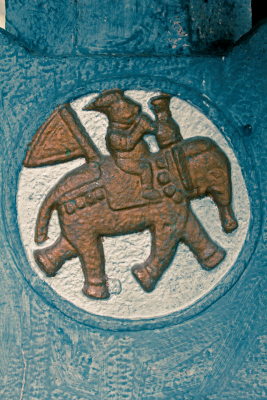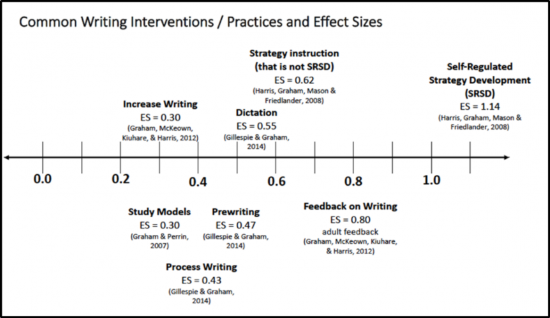Whether it’s change in our personal or professional lives, true lasting change is difficult. Why is it so difficult? According to Chip and Dan Heath (2010) in Switch: How to Change Things When Change is Hard, the main hindrance is that our brains have two independent systems that are always working and can fiercely disagree. The first system is the emotional side. This side is instinctive; it feels pain and pleasure, but wants comfort. The second system is the rational side. This side is contemplative; it ponders and scrutinizes and wants change. There is a natural tension between these two that can result in stasis.
This tension is captured by the psychologist Jonathan Haidt in the analogy of the Elephant and the Rider. Think of the tiny Rider holding the reins on an immense Elephant. The Rider appears to be in charge, but everyone knows the Rider’s control is tenuous because the six-ton Elephant is so much larger and stronger. If the Elephant is not motivated, they are not going anywhere; if the Elephant is overexcited, a rampage can follow. In this analogy, the Elephant represents our emotional side and the Rider our rational side. The Elephant must be engaged in order for any movement to take place, but the Elephant’s energy needs to be guided by the Rider’s planning and direction in order to get to a desired destination.
The Heath brothers draw additional lessons from this analogy. The Rider control, (i.e., self-control and self-supervision), needed to keep the Elephant engaged in learning new activities is an “exhaustible resource.” Significant change can quickly exhaust people, especially when that change requires people to alter behaviors that have become automatic and easy. This exhaustion interferes with creativity, persistence and impulse control, exactly the mental muscles needed for change. So what sometimes appears to be resistance or laziness is quite the opposite; people have worn themselves out trying to make a change and revert to their old ways out of exhaustion. As a result, the Heath brothers suggest that real change must occur in small increments.
In addition, those increments need to be very clearly spelled out. If the Rider doesn’t provide specific directions, the Elephant is likely to go in circles until it finally stops moving. “What looks like resistance is often a lack of clarity” (Heath & Heath, 2010, pg. 17).
The Heath brothers provide three guidelines for engaging in challenging change:
- Direct the Rider: When trying to engage others in change, appeal to their Riders. Share bright spots with them that show how the proposed change can create better outcomes. Clearly describe the destination toward which you are working. Provide clear directions for getting there through a step by step plan.
- Motivate the Elephant: People must be emotionally engaged in order to fully cooperate in change efforts. Start by “Finding the Feeling”. People need to know why they should care about the change. Tell stories about what the proposed change will accomplish that speaks to their feelings. Engage people in immediate short-term steps toward that change and celebrate every small victory along the way. Ensure these victories by teaching necessary skills and constantly acknowledging and celebrating every effort.
- Shape the Path: There is another Heath brother pearl of wisdom: “What looks like a people problem is often a situation problem” (pg. 3). It’s not always the people who need changing, sometimes it’s the circumstances under which they operate. Look for environmental tweaks that can make it easier for people to engage in the change. Make the change in small incremental steps. Always allow opportunities for repeated practice of a new skill or process so it becomes easy and automatic before adding another new step. Too much change at once usually results in reversion to old and comfortable practices. Finally, sometimes the change has to start with a small group first because many people feel more comfortable joining a change than being in the vanguard of a change. Have you seen the video “One Lone Nut”?
Dramatic change can be achieved even with a lack of resources and power if you can apply these guiding principles. So motivate your Elephant, direct your Rider and start shaping the change you want to see!
Reference
Heath, C. & Heath, D. (2010) Switch: How to change things when change is hard. NY: Broadway Books.




 Data-Driven Decision-Making
Data-Driven Decision-Making  Increasing Post-School Success through Interagency Collaboration
Increasing Post-School Success through Interagency Collaboration  How Can We Improve Deeper Learning for Students with Disabilities?
How Can We Improve Deeper Learning for Students with Disabilities?  Positive Classroom Management: Creating an Environment for Learning
Positive Classroom Management: Creating an Environment for Learning  Self-Determination Skills Empower Students of All Ages
Self-Determination Skills Empower Students of All Ages  Fidelity of Implementation: What is it and Why does it Matter?
Fidelity of Implementation: What is it and Why does it Matter?  Rethinking Classroom Assessment
Rethinking Classroom Assessment  A Three-Step Approach to Identifying Developmentally Appropriate Practices
A Three-Step Approach to Identifying Developmentally Appropriate Practices  Transforming Evidence-Based Practices into Usable Innovations: A Case Study with SRSD
Transforming Evidence-Based Practices into Usable Innovations: A Case Study with SRSD